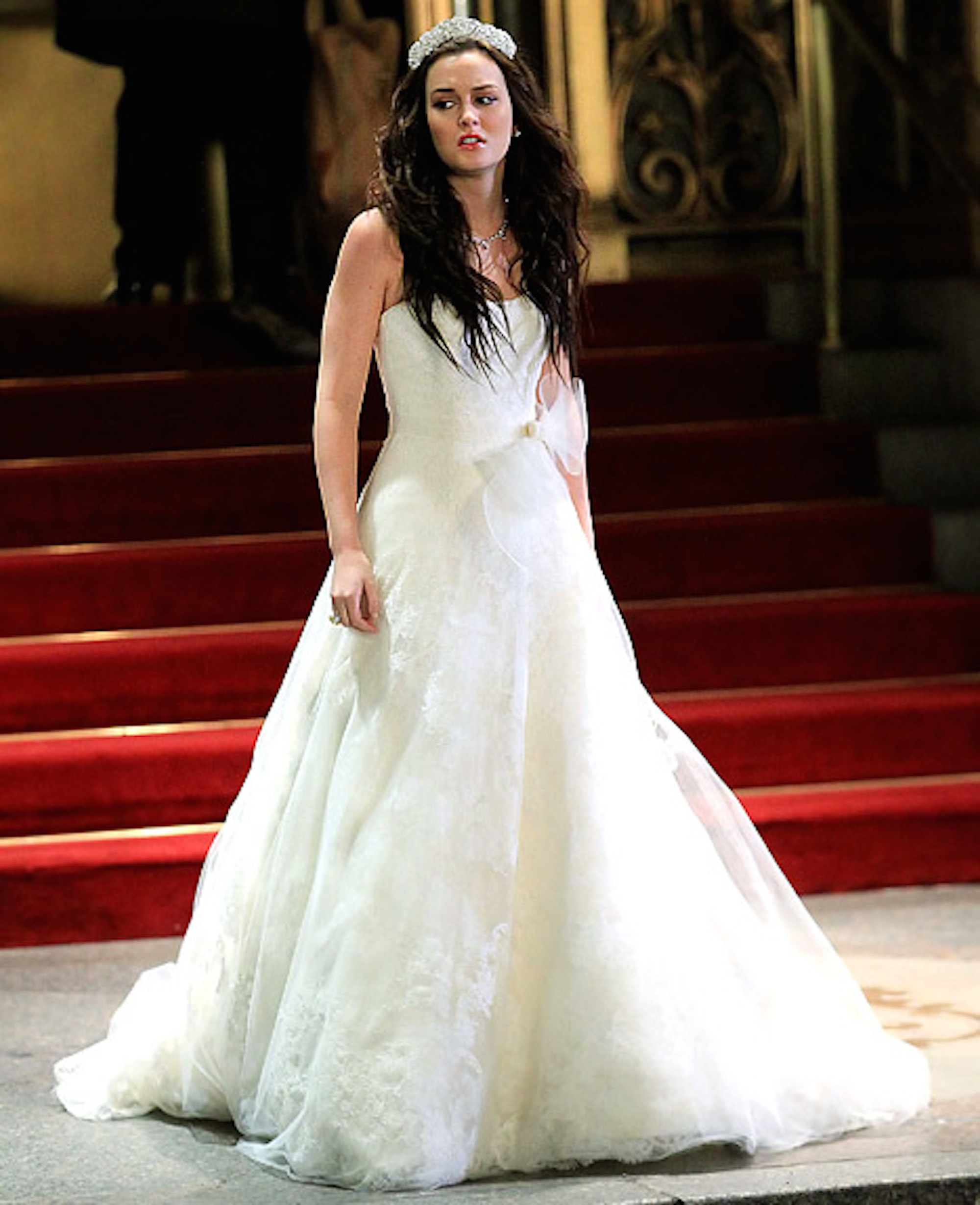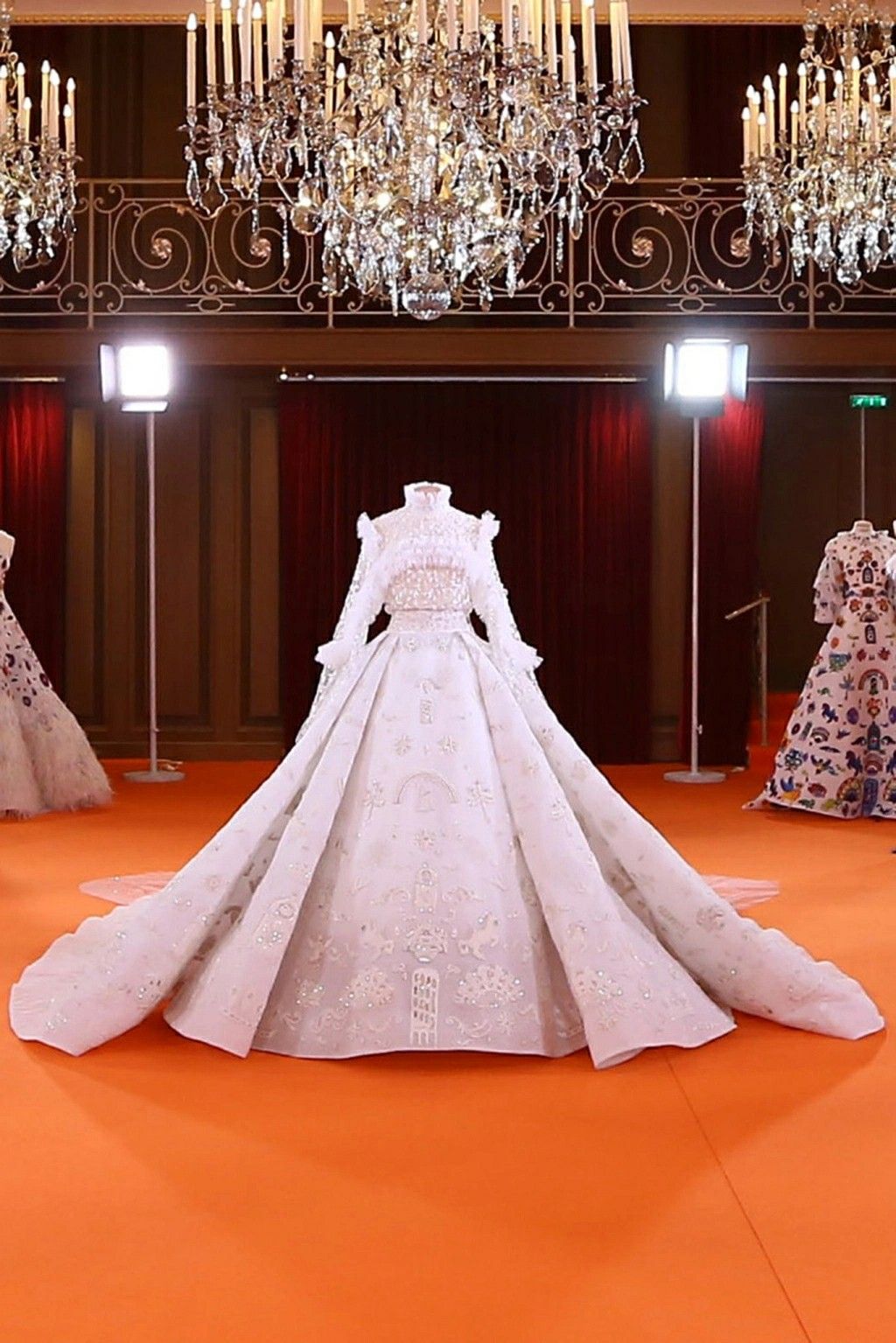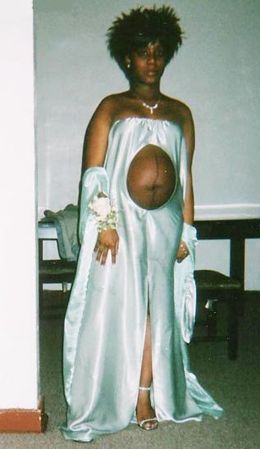1. The “Poofy Princess” Dress

This dress is the epitome of everything that is wrong with wedding dresses. It’s big, it’s bulky, and it makes the wearer look like a giant marshmallow. The bodice is usually covered in rhinestones and lace, and the skirt is so full that it’s impossible to walk in.

2. The “Mermaid” Dress

This dress is another classic example of a wedding dress gone wrong. It’s tight and unforgiving, and it accentuates all of the wearer’s flaws. The mermaid shape is supposed to be flattering, but it often ends up making the wearer look like a mermaid who’s been caught in a fishing net.
3. The “Trumpet” Dress
This dress is similar to the mermaid dress, but it’s even more exaggerated. The skirt is so wide that it flares out like a trumpet, and the bodice is so tight that it’s impossible to breathe.
4. The “Asymmetrical” Dress
This dress is all about asymmetry, and it’s not flattering on anyone. The hemline is uneven, the bodice is off-center, and the whole thing just looks like a mess.
5. The “Empire” Dress
This dress is high-waisted and loose-fitting, and it’s not flattering on anyone who doesn’t have a perfect figure. The empire waistline makes the wearer look pregnant, and the loose-fitting skirt makes her look frumpy.
6. The “Column” Dress
This dress is simple and elegant, but it’s also boring. It’s a straight column of fabric with no shape or detail. The only thing that makes this dress interesting is the neckline, but that’s not enough to save it from being a total dud.
7. The “Tea-Length” Dress
This dress is too short for a wedding dress, and it makes the wearer look like she’s going to a prom instead of a wedding. The tea-length hemline is outdated and unflattering, and it’s not appropriate for a formal occasion.
8. The “Maxi” Dress
This dress is too long for a wedding dress, and it makes the wearer look like she’s going to a funeral instead of a wedding. The maxi length is overwhelming and unflattering, and it’s not appropriate for a formal occasion.
9. The “Boho” Dress
This dress is all about lace and flowy fabrics, and it’s not appropriate for a wedding. The boho style is too casual and relaxed, and it’s not formal enough for a wedding ceremony.
10. The “Vintage” Dress
This dress is made to look like it’s from a bygone era, and it’s not flattering on anyone. The vintage style is outdated and uninspired, and it’s not appropriate for a modern wedding.## [Ugly Wedding Dresses]
Executive Summary
This exhaustive guide delves into the various facets of ugly wedding dresses, providing a comprehensive analysis of their characteristics, origins, and impact on the bridal industry. Through an exploration of historical examples, cultural influences, and modern trends, this article aims to shed light on a controversial and often-underexplored aspect of wedding attire.
Introduction
The wedding dress holds immense significance as a symbol of love, purity, and the beginning of a new chapter in life. However, not all wedding dresses are created equal, and some have garnered notoriety for their unconventional or downright unattractive designs. Dubbed “ugly wedding dresses,” these sartorial faux pas have sparked heated debates and divided opinions within the fashion community.
FAQ
- What constitutes an ugly wedding dress?
Ugly wedding dresses are subjective, but common attributes include unflattering silhouettes, garish colors, excessive embellishments, and cheap or poorly-made fabrics.
- Why do people wear ugly wedding dresses?
Reasons vary, from a desire to stand out to a lack of fashion sense or financial constraints. Some brides may also choose unconventional dresses to express their individuality.
- What should you do if you encounter an ugly wedding dress?
Be polite and respectful, offering constructive criticism only if asked. Remember that the bride’s happiness is paramount, regardless of your personal taste.
Subtopics
Unflattering Silhouettes
Ugly wedding dresses often feature silhouettes that accentuate unflattering features or hide the bride’s natural curves.
- Sack-like shapes: Resemble shapeless bags, concealing the bride’s figure and creating a bulky, uninspired look.
- Mermaid gowns gone wrong: Fit too tightly or with an abrupt flare at the knees, resulting in a disproportionate and unflattering appearance.
- Unbalanced proportions: Feature skirts that are disproportionately long or short compared to the bodice, creating an awkward and uncoordinated look.
Garish Colors
While non-traditional colors can be stunning, some ugly wedding dresses feature garish or mismatched colors that clash with the bride’s skin tone or the overall wedding aesthetic.
- Neon hues: Bright, fluorescent colors can be overpowering and unflattering, especially in a formal setting.
- Clashing patterns: Combining bold or mismatched patterns can create a dizzying and unappealing effect.
- Unflattering whites: Cheap or poorly-dyed white fabrics can appear yellowed or dingy, tarnishing the bride’s glow.
Excessive Embellishments
Over-the-top embellishments can overwhelm the dress and detract from the bride’s natural beauty.
- Beading overload: Dresses covered in excessive beading can weigh down the fabric and create an unrefined and gaudy look.
- Ruffles and frills: Ruffles and frills can add volume but, when used excessively, can create a childish or unflattering appearance.
- Unbalanced lace: Intricate lace details can be beautiful but, when placed haphazardly, can disrupt the dress’s design and create a chaotic effect.
Cheap or Poorly-Made Fabrics
Ugly wedding dresses are often made from low-quality or poorly-made fabrics that lack luster and elegance.
- Synthetic fabrics: Cheap synthetic fabrics like polyester or nylon can create a flimsy and unflattering look, lacking the drape and flow of natural fibers.
- Poor tailoring: Dresses made with cheap or unskilled labor may have uneven stitching, ill-fitting seams, or misshapen silhouettes.
- Flimsy materials: Dresses made from flimsy materials, such as thin chiffon or tulle, can be transparent or reveal the bride’s undergarments.
Cultural Influences
Cultural influences can play a role in the perception of ugly wedding dresses.
- Regional traditions: Some cultures have specific dress codes for weddings, which may feature unconventional or unflattering elements to Western eyes.
- Historical trends: Wedding dress styles have evolved over time, and certain designs that were once considered fashionable may now be deemed outdated or ugly.
- Individual preferences: Personal style and cultural background influence what individuals perceive as attractive or unattractive in a wedding dress.
Conclusion
The concept of ugly wedding dresses is a complex and multifaceted one, encompassing subjective perceptions, cultural norms, and fashion trends. While some dresses may be universally reviled for their unflattering designs or poor construction, others may be appreciated for their unconventional beauty or cultural significance. Ultimately, the perception of an ugly wedding dress is a matter of personal opinion, and the bride’s happiness and comfort should always be the guiding principle in the selection of her attire.
Keyword Tags
- Ugly Wedding Dresses
- Unflattering Silhouettes
- Garish Colors
- Excessive Embellishments
- Cheap or Poorly-Made Fabrics






